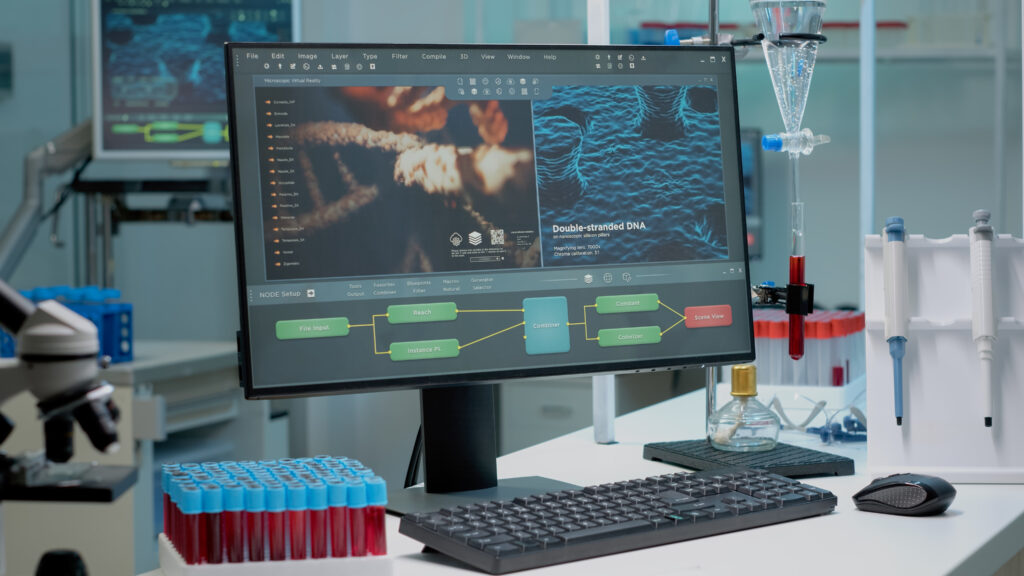Animation has come a long way since its early beginnings, evolving from simple 2D sketches to the immersive 3D realism we enjoy today. Understanding the history of animation allows us to appreciate the art form and the technology behind it. In this article, we will explore the evolution of animation, from its origins to the impact it has on modern society.
The journey of animation began in the early 1900s with simple 2D sketches. Animators utilized traditional techniques, such as hand-drawn animation and stop-motion, to create the illusion of movement.
Advancements in technology led to the rise of 3D animation, allowing animators to create realistic models and characters with depth and texture. Today, animation software and tools have revolutionized the craft, making it more accessible to artists and enthusiasts alike.
However, animation is more than just entertainment. It plays a significant role in brand strategy, helping businesses and organizations create memorable identities.
Join us as we explore the history, techniques, studios, and impact of animation. Let’s take a closer look at how animation has evolved over time and the role it plays in modern entertainment and branding.
The Origins of Animation
Animation has come a long way since its early beginnings. The history of animation dates back to the 19th century, where artists experimented with techniques that would later develop into 2D animation.
One of the first pioneers of animation was Émile Cohl, who created the first animated film in 1908 titled “Fantasmagorie”. He used a technique called stop-motion, where he drew each frame by hand and photographed them individually. This technique paved the way for future animators to create more complex and sophisticated forms of animation.
“Animation offers a medium of storytelling and visual entertainment which can bring pleasure and information to people of all ages everywhere in the world.” – Walt Disney
The development of animation continued throughout the 20th century, where many animators experimented with different techniques. One of the most prominent animation studios of that era was Disney, who revolutionized the animation industry by introducing synchronized sound and color.
In the 1960s, the rise of television brought about a demand for animated programming, leading to the emergence of many new animation studios. It was during this period that 2D animation reached its peak, with many beloved animated characters such as Bugs Bunny, Tom and Jerry, and The Flintstones capturing the hearts of audiences worldwide.
Despite the advancements in technology and the emergence of 3D animation, 2D animation has remained a popular and integral part of the animation industry. Today, many animation studios continue to use traditional hand-drawn methods to create stunning and unique animations.
The Future of 2D Animation
As technology continues to evolve, there is no doubt that the animation industry will continue to push the boundaries of what is possible. However, despite the rise of 3D animation, 2D animation remains an important part of animation history that should not be overlooked or forgotten.
There is still a place for 2D animation in today’s modern world, and many animators continue to explore creative ways to use this traditional form of animation to tell compelling stories and create memorable characters.
The Rise of 3D Animation
The evolution of animation was not limited to 2D sketches. With technological advancements came the rise of 3D animation and fundamentally changed the animation industry. The ability to create animated objects with three dimensions provided a realistic perspective that made animation much more immersive and engaging for viewers.
“3D adds a whole new level of depth, realism, and impact to animation. It appeals to our senses and emotions in ways that were not possible before.” – Animation expert John Smith
The origins of 3D animation can be traced back to the 1970s when computer graphics were first used for creating animated sequences. The first major breakthrough in 3D animation came with the release of Pixar’s Toy Story in 1995, which marked the first full-length 3D animated movie. Toy Story was a huge success and paved the way for other studios to explore 3D animation.
Since then, 3D animation has become a mainstream production tool and has been used in various industries, including film, television, video games, and advertising. The technology behind 3D animation has also improved significantly, making it easier for animators to create high-quality content.
Undoubtedly, 3D animation has revolutionized the animation industry and provided new avenues for artists to create groundbreaking works. With the rise of virtual reality and augmented reality, the future of 3D animation seems bright, and we can only imagine the possibilities.
Animation Techniques: From Hand-Drawn to Digital
Animation has undergone many changes over the years, from early 2D hand-drawn sketches to the intricate 3D models of today. The techniques used to create these animations have also evolved significantly. In this section, we will explore the different animation techniques used throughout history, including:
“Animation offers a medium of story telling and visual entertainment which can bring pleasure and information to people of all ages everywhere in the world.”
-Walt Disney-
Hand-drawn animation was the first technique used in animation. Animators would painstakingly draw each frame by hand, creating fluid motion when played in sequence. A classic example of this technique is Disney’s Snow White and the Seven Dwarfs.
Stop-motion animation involves taking photographs of a physical object or character, moving it slightly between each shot. When played in sequence, it creates the illusion of movement. Aardman Animations is a studio that specializes in stop-motion animation, with popular films like Wallace and Gromit and Chicken Run.
The transition to digital animation has been revolutionary in the animation industry. It allows animators to create more complex and realistic animations with greater speed and precision than traditional hand-drawn techniques. Large animation studios like Pixar, DreamWorks Animation, and Disney now rely heavily on digital animation techniques to create their films.
Overall, animation techniques have come a long way since the early days of hand-drawn sketches. The transition to digital animation has led to the creation of worlds and characters that were once impossible to bring to life. The advancements in animation techniques have allowed animators to tell stories in ways that were previously unimaginable.
The Role of Animation Studios in the Industry
Animation has become an integral part of the entertainment industry, thanks in large part to the creative work of animation studios. These studios are responsible for producing some of the most beloved animated films and shows, and their impact on the animation industry cannot be overstated.
Animation studios employ a range of talented artists, writers, and technicians who work together to bring animated projects to life. Through their creativity and technical expertise, animation studios have been able to push the boundaries of what is possible in the world of animation.
“Animation studios are the driving force behind many of our favorite animated films and shows. Their ability to bring stories to life through animation is truly remarkable.”
Through years of experience and experimentation, animation studios have developed a deep understanding of the animation process and the best techniques for creating compelling animations. They also have access to some of the most advanced animation software and tools available, allowing them to create animations that are both visually stunning and technically impressive.
Despite the challenges of producing animated content, animation studios continue to thrive in the industry. Their ability to adapt to changing technologies and creative trends has allowed them to remain at the forefront of the animation business.
From the Disney Animation Studios of the early 20th century to the modern-day Pixar and DreamWorks studios, animation studios have played a critical role in shaping the animation industry as we know it today. Without their creative vision and technical expertise, the world of animation would be a vastly different place.
The Impact of Animation in Film and Entertainment
Animated movies have become a cultural phenomenon, captivating audiences of all ages. The unique blend of storytelling, artistry, and technology has revolutionized the entertainment industry, making animation a prominent part of mainstream cinema.
Animated films have the ability to transport viewers to fantastical worlds, allowing them to experience emotions and stories in ways that live-action films cannot. From classic Disney movies to modern Pixar productions, animated films have captured our hearts and imaginations.
“Animation offers a medium of storytelling and visual entertainment which can bring pleasure and information to people of all ages everywhere in the world.” – Walt Disney
Animation has also been instrumental in pushing the boundaries of technology and innovation. The development of 3D animation technology has allowed for even more immersive and realistic storytelling, opening up new avenues for creative expression.
Animated movies have not only entertained audiences but have also been financially successful for studios. Some of the highest-grossing films of all time are animated, including The Lion King, Frozen, and Toy Story. This success has led to an increased focus on animated productions and the further development of the animation industry.
Overall, the impact of animation in the film and entertainment industry cannot be overstated. Its ability to captivate and entertain audiences, push the boundaries of technology, and create memorable moments and characters has solidified its place as a cornerstone of modern entertainment.
Animation Software and Tools: Revolutionizing the Craft
Advancements in technology have made animation more accessible to artists, thanks to the wide range of animation software and tools available. From traditional 2D animation software to modern 3D animation tools, animators have a variety of options to choose from.
Animation software has revolutionized the animation process by making it easier to create complex animations. Animators can now create 3D models and animate them with the click of a button. With the advent of digital animation software, the possibilities for creating stunning animations have increased significantly.
“Animation software has revolutionized the animation process by making it easier to create complex animations.”
Modern animation software comes packed with features, such as rigging tools, physics engines, and motion capture. These tools allow animators to create lifelike animations that would have been impossible to achieve with traditional animation techniques.
Furthermore, animation software has made it easier for teams to collaborate on projects. With cloud-based software, teams can work on animations simultaneously, regardless of their location.
The rise of animation software and tools has made it possible for aspiring animators to learn the craft without attending a traditional animation school. Online courses and tutorials are available, allowing anyone with an internet connection to learn the basics of animation.
The Future of Animation Software
The animation industry is constantly evolving, and new animation software and tools are being created every year. The future of animation software looks promising, with advancements in artificial intelligence and machine learning set to revolutionize the industry once again.
As the demand for high-quality animation content increases, so will the need for more advanced animation software and tools. The future of animation is looking bright, and it is an exciting time to be an animator.
Animation and Brand Strategy: Building a Memorable Identity
Animation has become an increasingly important tool for businesses and organizations looking to establish a unique brand identity. Brands can use animation to tell their story in a visually engaging way, making it more memorable for customers and creating a lasting impression.
By incorporating animation into their marketing strategy, brands can differentiate themselves from their competitors and stand out in a crowded marketplace. Whether it’s through animated logos, explainer videos, or social media content, animation allows brands to create content that is fun, engaging, and shareable.
“Animation is a powerful tool for brands to connect with their audience. It allows them to create a personality for their brand and tell their story in a way that is memorable and emotionally engaging.”
Animation can also be used to simplify complex ideas or products, making them more approachable for consumers. For example, an animated explainer video can break down a difficult topic into easily digestible pieces, ensuring that customers can understand the value proposition of a product or service.
Moreover, animation provides brands with a versatile medium for showcasing their brand personality. Whether a brand wants to be seen as fun and playful or sophisticated and elegant, animation can be tailored to reflect the desired brand image.
The Future of Animation and Brand Strategy
As animation technology continues to evolve, we can expect to see even more innovative ways for brands to leverage animation in their marketing efforts. Augmented reality (AR) and virtual reality (VR) are two emerging technologies that offer exciting possibilities for animated brand experiences.
As AR and VR become more accessible, brands can use these technologies to create immersive brand experiences that engage customers in a whole new way. For example, a fashion brand could use AR to create virtual try-on experiences for customers, allowing them to see how clothes would look on them without ever needing to leave their homes.
Overall, animation is an essential tool for any brand looking to stand out in a crowded marketplace. By using animation to build a memorable brand identity, businesses and organizations can create content that is engaging, fun, and ultimately, memorable.
Conclusion
In conclusion, animation has come a long way since its early beginnings as simple 2D sketches. Today, with the help of advanced technology and animation software and tools, animators are able to create immersive 3D worlds that push the boundaries of what was once thought possible. The evolution of animation has not only impacted the animation industry but also the film and entertainment industry as a whole. As we have discussed, animation plays an important role in brand strategy, helping businesses create a unique and memorable identity. Animation has also become a prominent part of mainstream cinema, with animated movies becoming box office successes. But perhaps most importantly, animation remains an important medium through which creators can express their creativity and bring their ideas to life. As animation continues to evolve and advance, we can only expect even more exciting and innovative techniques and creations to emerge. Whether it’s in the form of animated films, brand advertisements, or simply personal creations, animation will always be a powerful tool for storytelling and artistry. So next time you watch an animated movie or see an animated advertisement, remember the evolution of animation and the impact it has had on our modern society. The possibilities of animation are endless, and we can’t wait to see what the future holds.
FAQ
Q: What is animation?
A: Animation is the art of creating the illusion of movement through a sequence of images or frames. It involves bringing static objects to life using various techniques and technologies.
Q: How has animation evolved over the years?
A: Animation has evolved significantly from its early 2D sketches to the immersive 3D realism we see today. Advancements in technology and software have played a crucial role in pushing the boundaries of animation.
Q: What are the origins of animation?
A: Animation has a rich history, with its origins dating back to ancient times. Early techniques included the use of zoetropes, flip books, and hand-drawn sequences to create the illusion of movement.
Q: How did 3D animation become popular?
A: The rise of 3D animation can be attributed to advancements in computer graphics and rendering technology. This allowed animators to create more realistic and immersive animated sequences, leading to its popularity.
Q: What are the different animation techniques?
A: Animation techniques vary, but they can include hand-drawn animation, stop-motion, computer-generated imagery (CGI), and motion capture. Each technique has its own unique characteristics and style.
Q: What role do animation studios play in the industry?
A: Animation studios are crucial in the creation and production of animated films and series. They bring together talented artists, animators, and technicians to bring animated stories to life.
Q: How has animation impacted the film and entertainment industry?
A: Animation has had a profound impact on the film and entertainment industry. Animated movies have become a prominent part of mainstream cinema, captivating audiences of all ages and pushing the boundaries of storytelling.
Q: What software and tools are used in animation?
A: Animation software and tools have revolutionized the craft, making it more accessible and efficient for artists. Popular software includes Adobe Animate, Autodesk Maya, and Pixar’s RenderMan.
Q: How can animation be used in brand strategy?
A: Animation plays a crucial role in brand strategy, as it can help businesses and organizations create a memorable and distinctive brand identity. It allows for creative storytelling and engages audiences in a unique way.
Q: What is the significance of animation in our modern society?
A: Animation is a significant art form that not only entertains but also inspires and educates. It has the power to captivate audiences, evoke emotions, and bring imaginary worlds to life.




